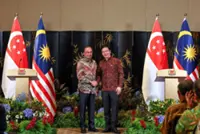Sri Mariamman Temple in KL is one of Malaysia’s oldest temples. — Tourism Malaysia
There is no denying the power social media holds in propagating travel trends. Its rise in the past decade has brought with it both positives and negatives.
Travel-wise, it has provided the public the means to easily discover new places to visit, and find inspirations on things to do at their chosen destinations.
Follow us on our official WhatsApp channel for breaking news alerts and key updates!
Thank you for your report!





